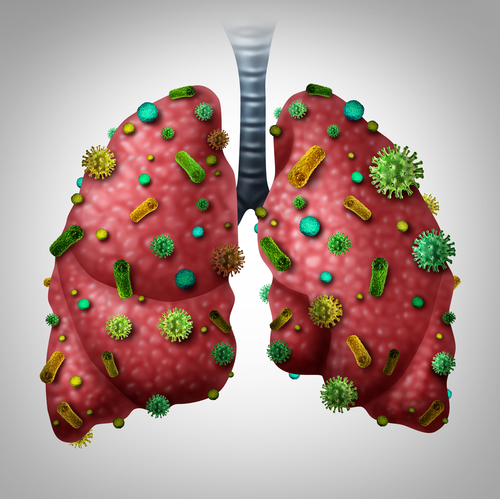MAC Lung Infections Best Treated When Specific Bacterial Species Known, Study Finds
Written by |

Pulmonary infection with a specific species of the Mycobacterium avium complex (MAC), called Mycobacterium intracellulare, can be aggressive in people with cystic fibrosis (CF), with a greater loss of lung function evident but a lesser incidence of a secondary lung infection, a single-site study reports.
This species also responded best to antibiotic treatment, its researchers said, suggesting that identifying “MAC isolates to the species level would have bearing on the prognosis and management” of these infections in CF patients.
The study, “Distribution and outcomes of infection of Mycobacterium avium complex species in cystic fibrosis,” was published in the Journal of Cystic Fibrosis.
MAC is comprised by a group of nontuberculous mycobacteria (NTM) that are responsible for about 70% of pulmonary infections in CF patients. Three main mycobacteria species within the MAC group are known to be responsible for most cases of NTM lung infections: Mycobacterium avium, Mycobacterium intracellulare, and Mycobacterium chimaera.
Laboratories routinely identify the MAC group as a whole, but not each bacterial species individually. Some studies suggest that different strains of NTM bacteria have different degrees of virulence, highlighting a need for specificity.
The Cystic Fibrosis News Today forums are a place to connect with other patients, share tips and talk about the latest research. Join today!
The distribution and contribution of each species to patient outcomes in CF, a population at risk for MAC lung infections, also remain unclear.
Researchers at the University of Michigan analyzed the medical records of 23 CF patients with MAC infections who were followed at the university’s clinical center.
MAC bacteria were extracted from respiratory samples collected during routine appointments, and bacterial DNA was analyzed to identify the different species.
Researchers examined a total of 57 MAC isolates, and found that the most common mycobacteria was M. avium (62.5%), followed by M. intracellulare (17.4%) and M. chimaera (13.1%). They also identified a fourth bacteria strain, Mycobacterium timonens, present in 4.3% of the samples.
Patient outcomes were found to differ significantly according to the mycobacteria strains a person carried. CF patients with M. intracellulare had more aggressive lung disease and were more likely to have the F508del CFTR mutation — the most common disease-causing mutation. But they also had lower rates of secondary infection with Staphylococcus aureus, the most prevalent bacteria infecting CF airways and one that can be resistant to treatment.
MAC infections were divided into three categories: a transient infection identified by a single positive MAC culture, followed by a negative laboratory test; a persistent infection identified by two positive MAC tests; and NTM disease, a chronic and progressive lung disorder, defined by the use of anti-MAC antibiotics.
In 22 of the 23 patients, available clinical data showed that 23% had a transient infection, 45% had a persistent infection, and 32% had NTM disease. Consistently, M. intracellulare infections were associated with higher rate of NTM disease (74%). In contrast, patients with M. chimaera were not diagnosed with NTM disease.
Lung function analysis of 21 patients revealed that all species were associated with poorer lung function before MAC identification, with the biggest decrease found in those with M. intracellulare infection.
Interestingly, lung function in CF patients with M. intracellulare infection improved after its MAC identification and treatment, supporting the efficacy of anti-MAC antibiotics against this species. In contrast, lung function in those with M. chimaera continued to decline, while it remained stable in those with M. avium infection.
Collectively, these findings demonstrate that bacterial DNA analysis can be used to identify individual mycobacteria species, and such identification may help in patient treatment and outcomes.
“If these trends are borne out in analyses of larger numbers of patients, identification of MAC isolates to the species level would have bearing on the prognosis and management of MAC infection in CF,” the team wrote.






